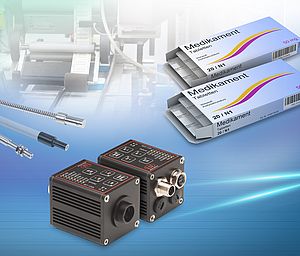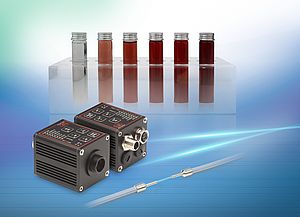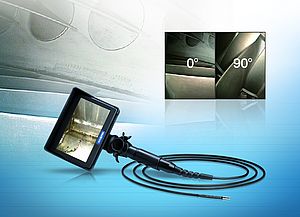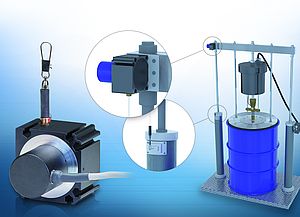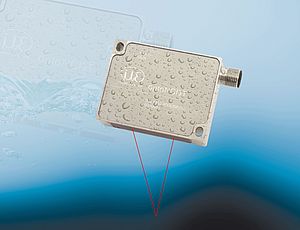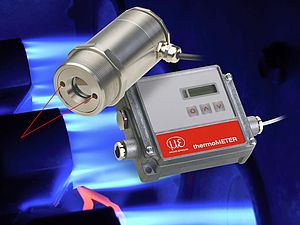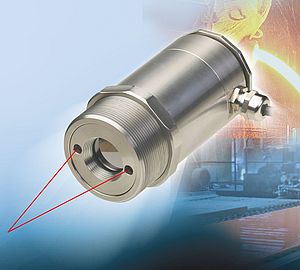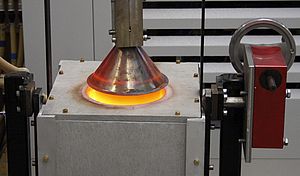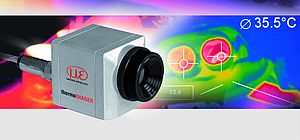Infrared temperature measurement devices are non-contact, relatively low cost, preventive maintenance tools. But when selecting the most suitable sensor users must consider two key parameters: emissivity and wavelength.
Plant and maintenance engineers use infrared temperature measurement devices, both handheld and fixed/online versions, as non-contact, relatively low cost, preventive maintenance tools. These devices accurately monitor, control and manage process temperatures and help to locate ‘hot spots’ on critical process plant, machinery and electrical connections – without having to interrupt production.
Using an online infrared sensor is beneficial in applications where the temperature of an object, material, surface or liquid is critical to the production process. When selecting the most suitable temperature measurement device for the application, engineers need to carefully consider their measurement requirements.
Benefits of non-contact infrared thermometers
Infrared thermometers measure the temperature of an object without touching it. It is therefore possible to perform fast, reliable temperature measurements of moving, hot or difficult-to-access objects. While contact temperature sensors or probes can influence the temperature of the target object, sometimes even damage the product itself, the non-contact method ensures precision measurements without damaging the target object. Infrared sensors can also measure very high temperatures, whereas a contact sensor would either be destroyed or would have a short service life.
Not only are infrared devices now relatively inexpensive, they also offer a raft of technical benefits and a variety of options for users, including handheld or inline process control, open connectivity to fieldbus systems and options for hazardous environments.
For accurate temperature measurement using infrared sensors, users must carefully consider two key parameters: emissivity and wavelength.
Emissivity
All bodies above absolute Kelvin (-273°C) emit infrared radiation in three ways, via a combination of emitted radiation, radiation reflected from the surroundings, and by transmitting the radiation through itself. How these factors interact depends on the material of the measurement object. However, for non-contact infrared temperature measurements, only the emitted radiation element is important.
The relationship of the emission types to each other is best described in the following way. If it is considered that at any given temperature, the sum of the radiation of the three emission types is equal to one, and it is assumed that solid bodies transmit negligible radiation, the transmitted element can be treated as zero. Therefore, the heat energy coming from an object only comprises emitted and reflected radiation.
It is now easier to understand why objects such as polished and shiny metals can only have a low emission or emissivity, as radiation from the surrounding environment is strongly reflected (and so proportionally high) by these surfaces.
For example, the typical emissivity for freshly milled steel at 20°C is 0.2 (reflected energy would be 0.8). This means 80% of the emitted heat energy from the object would be reflected ‘heat energy’ from surrounding objects! However, at a much higher temperature of 1,100°C, the same material will have a typical emissivity of 0.6.
In contrast, objects such as textiles or matt black surfaces reflect very little and therefore emit a high proportion of the heat energy. Emissivity of a black, matt paint at 100°C is typically 0.97 and so is much more suited to non-contact temperature measurement.
Many low cost devices have fixed emissivity correction of 0.95, which makes them unusable for almost all accurate temperature measurement tasks. All Micro-Epsilon temperature sensors have adjustable emissivity correction.
Wavelength
The previous description of emissivity is rather simplistic in order to explain the relationship between the three radiated energy components. However, it should be noted that the emissivity of an object will vary when monitoring the radiated heat energy at different wavelengths. Therefore, developing sensors that measure temperature at specific wavelengths can significantly increase measurement stability.
Put simply, material groups can be used to describe the optimum wavelengths for highest object emissivities and therefore the most stable results. For metals, 0.8 to 2.3μm, glass 5μm, textiles and most matt surfaces 8-14μm. Plastics are more complex, requiring specific wavelength sensors to be developed for polyethylene, polypropylene, Nylon and polystyrene (3.43μm). Polyester, polyurethane, Teflon, FEP and polyamide require 7.9μm. Thicker, pigmented films require 8-14μm.
To summarise, when selecting an infrared temperature sensor, it is crucial that the wavelength band over which the sensor measures is known, and that the correct wavelength band is used for the object to be measured. In addition, the object emissivity values over this wavelength and the temperature range to be measured must also be known or calculated.
By Chris Jones, Managing Director at Micro-Epsilon UK
Selecting the right temperature sensor
Infrared temperature measurement devices are non-contact, relatively low cost, preventive maintenance tools. But when selecting the most suitable sensor users must consider two key parameters: emissivity and wavelength.
- by Micro-Epsilon Messtechnik GmbH & Co.KG
- April 12, 2010
- 351 views







